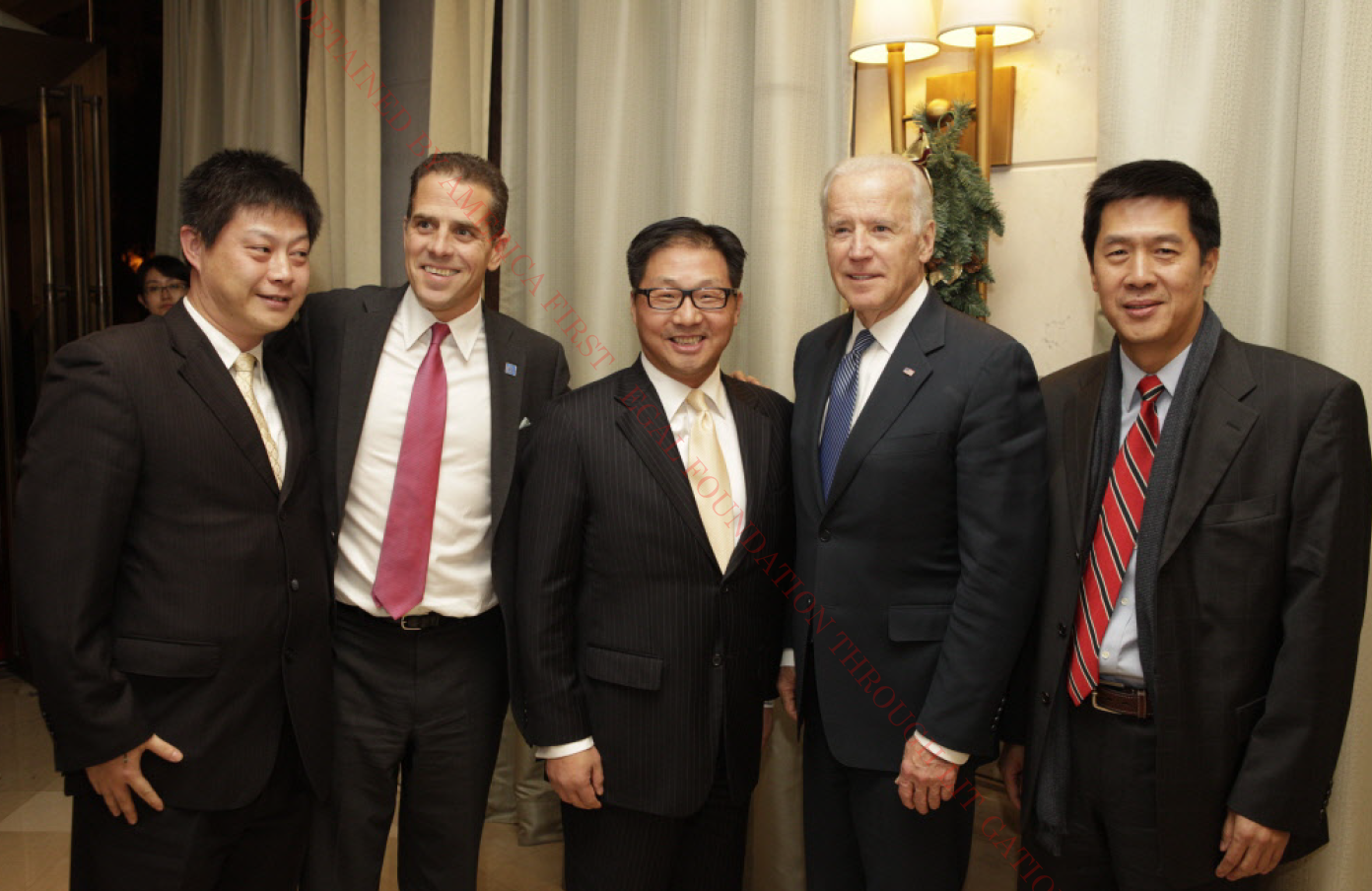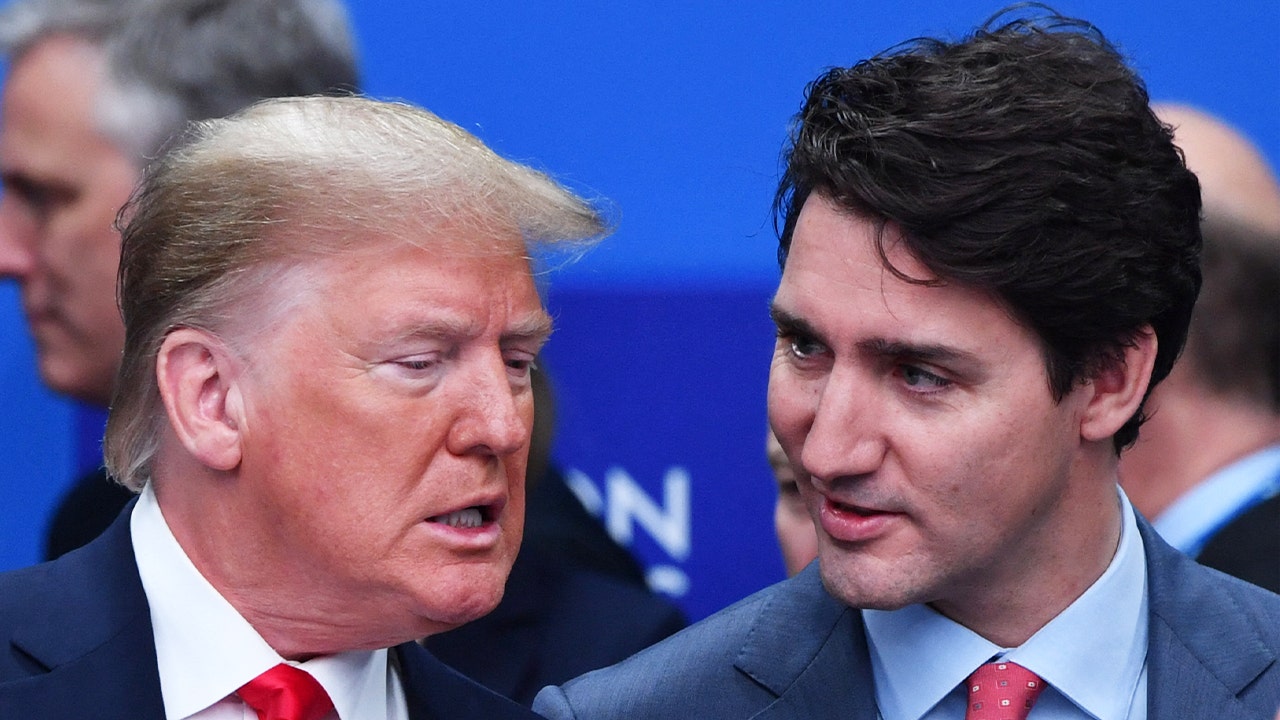World
Pennsylvania governor’s voter registration change draws Trump’s ire in echo of 2020 election clashes

HARRISBURG, Pa. (AP) — Donald Trump has a familiar target in his sights: Pennsylvania’s voting rules.
He never stopped attacking court decisions on mail-in ballots during the COVID-19 pandemic, falsely claiming it as a reason for his 2020 loss in the crucial battleground state. Now, the former Republican president is seizing on a decision by Democratic Gov. Josh Shapiro to bypass the Legislature and start automatic voter registration.
The blowback has echoes of the 2020 election, when Trump and his allies relentlessly criticized decisions by the state’s Democratic-majority Supreme Court. That included extending the deadline to receive mail-in ballots over warnings that the pandemic had slowed postal service deliveries.
Republicans have joined Trump in railing against Shapiro’s action, saying there are not enough safeguards to prevent minors or undocumented immigrants from registering. The Shapiro administration disputes that.
“THE DEMOCRATS ARE TRYING TO STEAL PENNSYLVANIA AGAIN BY DOING THE ‘AUTOMATIC VOTER REGISTRATION’ SCAM,” Trump wrote on his social media platform.
Some Republican lawmakers are threatening litigation, saying Shapiro should have sought approval from the Legislature, where control is divided between the parties. Meanwhile, national and state Republican parties are seeking an explanation from Shapiro’s administration for how it will ensure that non-U.S. citizens and minors cannot register to vote.
In a statement, Republican National Committee Chairwoman Ronna McDaniel said Shapiro is springing an “unclear and unnecessary last-minute rule change” on voters weeks before the Nov. 7 election, which features a race for a state Supreme Court seat. The first-term governor “cares more about getting airtime on MSNBC than making sure Pennsylvania elections are secure and transparent,” McDaniel said.
Shapiro also is trying to capitalize on his move. He did a round of national cable TV appearances after the Sept. 19 announcement and used it as fundraising pitch, promoting it as a major advancement for democracy.
“This will help tens of thousands of Pennsylvanians make their voice heard — no matter who you choose to vote for or what your views are,” Shapiro said in a fundraising email.
Democrats contended that Shapiro was well within his legal authority to authorize automatic voter registration. One election lawyer, Adam Bonin, said Republicans criticizing it are simply seeking cover, should Trump lose in 2024, and are using it to raise campaign donations.
States began enacting automatic voter registration systems in 2015, and versions of it have now spread to 24 states and the District of Columbia, according to the National Conference of State Legislatures. Most of those states are left-leaning, but they also include Republican-controlled Alaska, Georgia and West Virginia.
Georgia implemented it in 2016 and has seen an increase in registrations and no problems with non-U.S. citizens registering to vote, according to the state elections office. A survey of several states with automatic voter registration revealed similar experiences.
In Pennsylvania, people will notice the change when they head to a driver’s license center to obtain or renew a license. On computers there, a prompt will tell them they will be registered to vote “unless you decline to register.”
Previously, the prompts asked users if they wanted to register and to affirmatively check a box saying “yes.”
The Shapiro administration said it already has protections in place to prevent non-U.S. citizens or those under age 18 from being offered registration.
Some of those protections date to 2017, when the state said it fixed a two-decade-old glitch that might have enabled several thousand non-U.S. citizens to inadvertently register to vote. Officials estimate that people in that group cast about 540 ballots over 35 elections in 17 years.
Republicans in some states that have switched to automatic registration say it will lead to fraud or illegal voting, and conservatives in Alaska have attempted to repeal that state’s automatic registration.
Election researchers say no widespread fraud or illegal voting has emerged from the process. The most common problems are initial glitches in matching outdated information or giving unclear instructions to people who were registering or updating their voter information.
Supporters say it is a more secure, efficient and cost-effective way to maintain voter rolls.
“It’s more important to look at what are the advantages here, and there are a lot of advantages of this particular reform and there is a reason why many states have moved in this direction,” said Tammy Patrick, CEO of programs for the National Association of Election Officials.
Where research has been done, it didn’t show any particular advantage for any group other than a slight boost to Republican registration and that of rural white voters, said Charles Stewart III, director of the Massachusetts Institute of Technology’s Election Data and Science Lab.
“That’s something that both Democrats and Republicans need to keep in mind — that this is not going to be the game-changer that anybody believes and hopes for, or fears,” Stewart said.
In Pennsylvania, roughly 8.6 million people are registered to vote, while slightly more than 1 million are at least 18 years old but unregistered, according to government figures.
Left-leaning groups applauded the adoption of automatic registration. The New Pennsylvania Project said it “will undoubtedly help to close the voter registration gap, especially in communities of color, where the gap is the most pronounced.”
Researchers from the Public Policy Institute of California, the University of Southern California and the University of California, Berkeley, concluded in a 2021 study that automatic voter registration had increased registration by 3% in states where it was in effect.
But the increase in the number of people actually voting was only about 1%, meaning that most people who registered that way did not end up casting a ballot.
Still, even that small percentage could mean tens of thousands of new voters going to the polls in Pennsylvania, potentially a meaningful figure in a tight election. In 2020, Democrat Joe Biden won by about 80,500 votes, while Trump won in 2016 by about 44,200 votes.
Shapiro’s order could be headed for a court challenge, which would be a familiar landing spot for disputes over election laws in the state.
In the months before the 2020 election, Trump’s campaign, state officials, the Democratic Party and others fought over the rules for mail-in voting, as Trump worried those ballots would cost him the election and baselessly smeared them as rife with fraud.
Sam DeMarco, the GOP chairman of Allegheny County, which includes Pittsburgh, said he is not ready to say that 2024 will be a replay of 2020. But the way Shapiro enacted automatic registration — without hearings, legislation or a public education process — didn’t help promote the kind of transparency that could dispel conspiracy theories, he said.
“I don’t know where we’re going. It’s going to depend on the actions of some as to how bad it gets,” DeMarco said. “But I think both sides have to be ready because, as history has shown, they can’t help themselves.”
__
Associated Press reporter Christina A. Cassidy in Atlanta contributed to this report.
___
Follow Marc Levy at twitter.com/timelywriter.

World
Jay-Z’s Accuser Can Remain Anonymous, Judge Criticizes His Lawyer’s ‘Relentless’ Filings

The woman accusing Jay-Z and Sean “Diddy” Combs of sexually assaulting her when she was 13 can proceed anonymously (“at least for now”) in her lawsuit against the rappers, a judge ruled Thursday.
New York Judge Analisa Torres also condemned the legal team representing Jay-Z (real name Shawn Carter) for the “relentless filing of combative motions containing inflammatory language and ad hominem attacks [on accuser’s lawyer, Tony Buzbee],” according to a court order obtained by Variety. “Since Carter’s attorney first appeared in this case seventeen days ago, he has submitted a litany of letters and motions attempting to impugn the character of Plaintiff’s lawyer [Buzbee].”
Judge Torres continues, calling the complaints “inappropriate, a waste of judicial resources, and a tactic unlikely to benefit his client [Jay-Z].”
Jane Doe, who filed her original lawsuit against Combs in October, and re-filed it with Carter’s name in early December, will remain anonymous at this early stage of the litigation. She could still be required by the court to reveal her identity.
Alex Spiro, a lawyer for Carter, recently asked the judge to dismiss the entertainer from the woman’s lawsuit. He cited a report from NBC News that revealed the accuser had admitted to some “inconsistencies and outright impossibilities” in her allegations. His team has also issued public statements referring to Buzbee as a “1-800 lawyer” who is “in the pursuit of money and fame.”
Judge Torres denied Carter’s request to dismiss the case. Representatives for Carter did not immediately respond to Variety‘s request for comment.
In the last few weeks, Buzbee issued his own lawsuit against Roc Nation, the entertainment company owned by Carter, claiming they are using “shadowy operatives” to bribe his former clients into filing “frivolous” complaints against him. Carter has also sued Buzbee for defamation.
Jane Doe, who alleges she was 13 when Combs and Carter raped her in 2000, says she encountered the pair at an afterparty for the MTV Music Video Awards.
Carter responded to the allegation almost immediately. “You have made a terrible error in judgment thinking that all ‘celebrities’ are the same,” Carter wrote in a letter addressing Buzbee. “I’m not from your moral world. I’m a young man who made it out of the project of Brooklyn. We don’t play these types of games. We have very strict codes and honor. We protect children, you seem to exploit people for personal gain. Only your network of conspiracy theorists, fake physics, will believe the idiotic claims you have levied against me that, if not for the seriousness surrounding harm to kids, would be laughable.”
Combs has been held in a Brooklyn jail since September. He will remain there until his trial is scheduled to begin in May.
World
China unveils world's largest amphibious warship

China has launched the first of its new line of amphibious assault ships and its biggest warship yet, strengthening what is already the world’s largest navy.
The Sichuan, a type 076 new-generation amphibious assault ship, was put into the water at a launch and naming ceremony on Friday.
With a full load displacement of 40,000 tons, the warship ranks among the world’s largest amphibious assault ships, featuring a dual-island superstructure and full-length flight deck, the People’s Liberation Army Navy (PLAN) said in a statement.
JOE BIDEN POSES WITH HUNTER’S CHINESE BUSINESS ASSOCIATES IN NEWLY SURFACED PHOTOS: ‘INCREDIBLY DAMNING’
A launching ceremony is held to unveil China’s first Type 076 new-generation amphibious assault ship, the Sichuan, at Hudong-Zhonghua Shipbuilding, a Shanghai-based subsidiary of China State Shipbuilding Corp, on December 27, 2024, in Shanghai, China. (Pu Haiyang/VCG via Getty Images)
China Bugle, an news outlet associated with the PLAN’s news media center, reported the ship will play a key role in transforming and developing the Chinese navy and enhancing its combat capabilities in the far seas.
The Sichuan is capable of launching fighter jets and unmanned drones from an electromagnetic catapult. It is designed to carry ground troops in landing craft with air support.
TIK TOK DIVESTMENT COULD BE ‘DEAL OF THE CENTURY’ FOR TRUMP, HOUSE CHINA COMMITTEE CHAIR SAYS

Named after southwest China’s Sichuan Province, the independently-developed new vessel was put into the water at a launch and naming ceremony. (Pu Haiyang/VCG via Getty Images)
The ship also features “arrester technology” that Chinese researchers boast will allow fighter jets to land on its deck, similar to an aircraft carrier.
China launched its first amphibious assault ship, a type 075 class warship called the Hainan, in 2019.
CHINA WARNS US TO STOP ARMING TAIWAN AFTER BIDEN APPROVES $571M IN MILITARY AID

Chinese military officials celebrate at the launch ceremony for the Sichuan. (Pu Haiyang/VCG via Getty Images)
The PLANmi has been working on modernizing its forces for more than a decade, with the aim of being able to operate globally rather than being restricted to waters near the Chinese mainland. China first managed to launch fighter jets with the new electromagnetic technology on its homemade aircraft carrier, the Fujian, which launched two years ago.
The Sichuan will now undergo additional tests at sea.
China has the largest navy in the world and is consistently trying to upgrade its fleet. Recently, researchers found that the country is working on designing a nuclear-powered aircraft carrier, which would allow it to deploy its ships in distant waters without needing a base to refuel.
The U.S. Navy currently has 11 nuclear-powered aircraft carriers deployed in strategic locations globally, including in the Asia-Pacific.
The Associated Press contributed to this report.
World
Health worker displaced by Israeli attacks in Gaza dies of ‘extreme cold’

Many people in Gaza lack adequate shelter and are malnourished after more than a year of Israeli attacks and blockades.
A Palestinian healthcare worker has died due to “extreme” weather conditions, according to a statement by the enclave’s Ministry of Health, as severe cold compounds the hardship faced by people displaced by Israel’s relentless attacks.
The body of Al-Hakim Ahmed al-Zaharneh, who worked at the European Gaza Hospital, was found inside his tent in al-Mawasi area, west of the city of Khan Younis, southern Gaza, the ministry said on Friday.
“This incident comes in light of the difficult humanitarian conditions that displaced citizens are experiencing, as the suffering of Gaza residents increases due to low temperatures and the lack of heating means in tents,” the ministry said.
The ministry said earlier that four Palestinian babies have died in tents in recent days amid the cold weather and widespread malnutrition.
Al Jazeera’s Hani Mahmoud, reporting from Deir el-Balah in central Gaza, said that the number of casualties in vulnerable groups is increasing due to worsening weather conditions.
“For 14 months now, people here have been lacking basic necessities to help them survive these difficult conditions – even in summer,” he said.
“Now in winter, the temperature has dropped very low, [and] people in tent camps feel the cold as being [colder] than the actual levels.”
He said that mothers often lack the strength or ability to breastfeed as they are malnourished and unwell.
“The conditions are worse for vulnerable groups like babies and, in the absence of [humanitarian aid], it is natural that deaths will happen.”
The vast majority of the Gaza Strip’s 2.4 million residents have been displaced at least once since war broke out with the Palestinian group Hamas on October 7, 2023, with many people living in tents that offer little protection from the cold, rain and flooding.
The United Nations and other organisations have repeatedly decried the worsening humanitarian conditions in Gaza, as Israeli attacks and blockades severely curtail access to food, water, medicine and other supplies.
A leading United States government organisation monitoring food crises around the world withdrew a new report this week warning of imminent famine in north Gaza under what it called Israel’s “near-total blockade,” after the US asked for its retraction, US officials told The Associated Press.
The move follows public criticism of the report from the US ambassador to Israel.
The report by the Famine Early Warning Systems Network (FEWS NET) had warned that a “famine scenario” was unfolding in northern Gaza where Israel launched a renewed offensive in early October.
Meanwhile, on Friday, the director of Gaza’s Health Ministry told Al Jazeera that Israeli forces stormed the Kamal Adwan Hospital, one of the few remaining medical facilities in north Gaza, and forced the 350 people there to evacuate, including all the patients and staff. He said contact with the hospital had been lost.
Israel’s war in Gaza has killed at least 45,436 Palestinians and wounded 108,038 since October 7, 2023, according to figures released on Friday by Gaza’s Health Ministry.
An estimated 1,139 people were killed in Israel during the Hamas-led attacks that day and more than 200 were taken captive.
-
/cdn.vox-cdn.com/uploads/chorus_asset/file/24924653/236780_Google_AntiTrust_Trial_Custom_Art_CVirginia__0003_1.png)
/cdn.vox-cdn.com/uploads/chorus_asset/file/24924653/236780_Google_AntiTrust_Trial_Custom_Art_CVirginia__0003_1.png) Technology6 days ago
Technology6 days agoGoogle’s counteroffer to the government trying to break it up is unbundling Android apps
-

 News1 week ago
News1 week agoNovo Nordisk shares tumble as weight-loss drug trial data disappoints
-

 Politics1 week ago
Politics1 week agoIllegal immigrant sexually abused child in the U.S. after being removed from the country five times
-

 Entertainment1 week ago
Entertainment1 week ago'It's a little holiday gift': Inside the Weeknd's free Santa Monica show for his biggest fans
-

 Lifestyle1 week ago
Lifestyle1 week agoThink you can't dance? Get up and try these tips in our comic. We dare you!
-
/cdn.vox-cdn.com/uploads/chorus_asset/file/25672934/Metaphor_Key_Art_Horizontal.png)
/cdn.vox-cdn.com/uploads/chorus_asset/file/25672934/Metaphor_Key_Art_Horizontal.png) Technology3 days ago
Technology3 days agoThere’s a reason Metaphor: ReFantanzio’s battle music sounds as cool as it does
-

 Technology1 week ago
Technology1 week agoFox News AI Newsletter: OpenAI responds to Elon Musk's lawsuit
-

 News4 days ago
News4 days agoFrance’s new premier selects Eric Lombard as finance minister
















